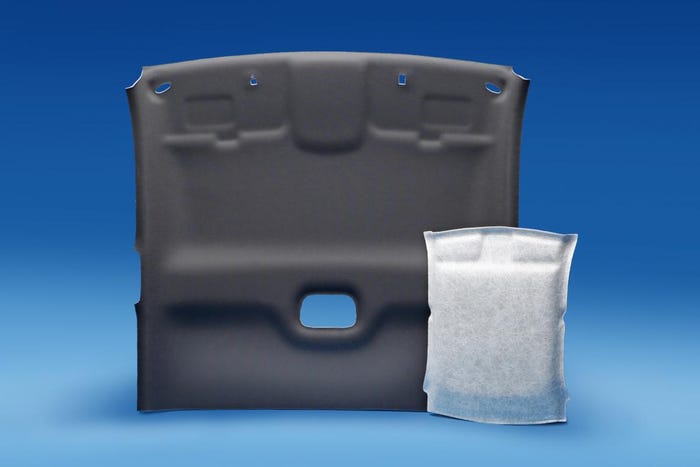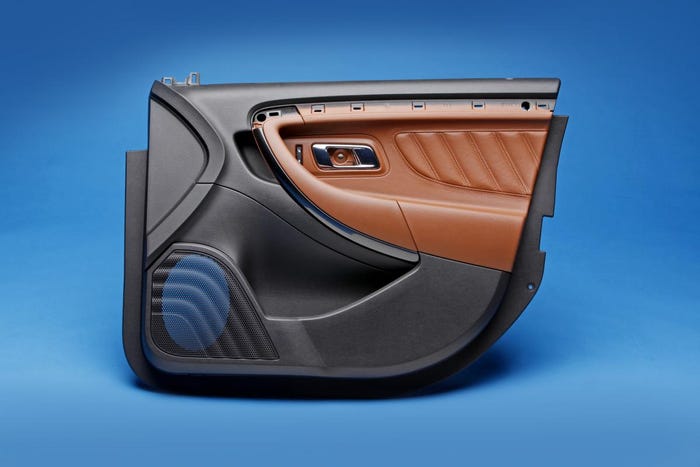Polyurethane helps auto industry meet lightweighting goals
The Corporate Average Fuel Economy (CAFE) standards, set by the National Highway Traffic Safety Administration and the Environmental Protection Agency (EPA), established a goal that model year 2025 vehicles will attain an average of around 50 miles per gallon (mpg). This is an approximate 40% increase in fuel efficiency over current levels. Auto manufacturers are keenly focused on creating lighter vehicles to meet this standard.
May 1, 2014

The Corporate Average Fuel Economy (CAFE) standards, set by the National Highway Traffic Safety Administration and the Environmental Protection Agency (EPA), established a goal that model year 2025 vehicles will attain an average of around 50 miles per gallon (mpg). This is an approximate 40% increase in fuel efficiency over current levels. Auto manufacturers are keenly focused on creating lighter vehicles to meet this standard. In response to this need for lighter yet durable parts, the polyurethane industry is responding with new ways to incorporate polyurethane into different vehicle components.
Polyurethane has long been a staple for seating foam. Polyurethane foam offers high performance over a wide range of firmness while adding only nominal weight to the car overall. The foam holds its shape over long periods of time and heavy use. In addition to the seats, foam is also widely used in headrests, arm rests, headliners, and even instrument panels.
Both auto manufacturers and polyurethane producers are looking beyond the seats and soft surfaces to other applications of polyurethane-enabled lightweight materials in the automotive industry.
Frames and rigid materials
In seating, polyurethane is moving into the seat frames with the use of reaction injected molded (RIM) polyurethane parts. Similarly, one of the newer applications is the use of polyurethane in the actual frame of the car. While bumpers have long incorporated polyurethane, the frame remains mainly steel. Some manufacturers have begun using polyurethane foam in the B pillars. These are the vertical support between a car's front door window and rear side window and the area that is vulnerable in a side impact. Hollow steel tubes can be filled with polyurethane foam that hardens into an incredibly rigid barrier for impact.
Sound proofing
 At one time, sound proofing in automobiles just focused on keeping road noise out. Today, with in-car wireless technology and global positioning systems (also known as GPS) in cars across all price points, the acoustic needs of cars have become even more important. Many components impact the sound quality within a car. Headliners, for instance are an important part of how automakers can keep the interior of the car quieter. Some manufacturers use open-cell acoustic polyurethane foam made with some soy-based polyols. This product also features permeable thermoplastic adhesives and permeable felt fabrics in the headliner construction. The result is delivery of excellent noise / vibration / harshness (NVH) performance and lower weight.
At one time, sound proofing in automobiles just focused on keeping road noise out. Today, with in-car wireless technology and global positioning systems (also known as GPS) in cars across all price points, the acoustic needs of cars have become even more important. Many components impact the sound quality within a car. Headliners, for instance are an important part of how automakers can keep the interior of the car quieter. Some manufacturers use open-cell acoustic polyurethane foam made with some soy-based polyols. This product also features permeable thermoplastic adhesives and permeable felt fabrics in the headliner construction. The result is delivery of excellent noise / vibration / harshness (NVH) performance and lower weight.
Affordable design
The inherent flexibility of polyurethane chemistry allows automotive designers to make their dream models a reality. Sleeker, more aerodynamic designs also have an impact on fuel needs.
For interior design, molded polyurethane panels can be treated to have the appearance of hand wrapped leather. Polyurethane also adds "warmth" to soft touch surfaces such as steering wheels and gear shifts.
The push for lightweighting is likely to continue far beyond 2025. Consumers and governments alike will continue to demand increased energy efficiency in transportation and we in the polyurethane industry are already looking for more ways we can help reduce the weight and, by proxy, the footprint of automobiles on our environment.
Lee Salamone is the Senior Director of the American Chemistry Council Center for the Polyurethanes Industry (CPI), a value chain organization that represents companies that manufacture the raw materials and machinery used to make all kinds of polyurethanes materials including those used in automotive applications. CPI promotes the use of polyurethanes in many end use markets and provides information on safe use of these materials. For more information: www.polyurethanes.org and www.incrediblepolyurethane.com.
About the Author(s)
You May Also Like


